Intel Unveils Lunar Lake Architecture: New P and E cores, Xe2-LPG Graphics, New NPU 4 Brings More AI Performance
by Gavin Bonshor on June 3, 2024 11:00 PM ESTBetter I/O: Thunderbolt 4, Thunderbolt Share, Wi-Fi 7 Included
Intel's developments in I/O and connectivity bring the current generation of connectivity to the Lunar Lake platform. Key highlights in terms of I/O, which is set for Lunar Lake, include native Thunderbolt 4 connectivity, the new Thunderbolt Share functionality, and the upgrade to Wi-Fi 7 wireless connectivity.
Thunderbolt 4 builds excellently on the foundation laid by Thunderbolt 3, which isn't new from a controller standpoint. It does offer enhancements in connectivity and bandwidth, and being internally opted for is the key difference here. Three Thunderbolt ports are now allowed for every laptop, making this feature very flexible and usable.
Thunderbolt Share is a new technology that will come with Lunar Lake. It allows multiple PCs to share screens, monitors, keyboards, mice, and storage across systems in a straightforward and fast manner at up to 60 frames per second. This is very important in collaborative environments, whereby sharing data is made easy and quick, thus improving workflow. When used in productivity tasks, the utility allows users to sync folders and has a drag-and-drop file-sharing function between PCs at high speeds.
Wi-Fi 7 is also integrated into the Lunar Lake platform, which Meteor Lake omitted regarding wireless connectivity. This multi-link operation feature of Wi-Fi 7 adds wireless signal integrity and reliability and increases throughput with less latency by duplicating packets across all links above. This implies smoother performance and better load balancing, even in demanding applications. The greatest benefit from Wi-Fi 7's new capabilities comes to the user when dealing with bandwidth-intensive tasks.
It also includes RF Interference Mitigation technology, where the DDR clock frequency is automatically tuned to minimize interference with Wi-Fi signals. This function saves 50% of throughput degradation caused by memory noise; thus, theoretically, it should uplift the performance of the entire wireless network. Another positive effect users can expect is robust connectivity, even in very demanding environments.
Intel's partnership with Meta goes further, tapping into this Wi-Fi 7 technology to enhance VR experiences. This further optimizes the video latency performance and reduces interference, thus making VR applications more seamless and engaging, at least from a wireless connectivity viewpoint. The new enhancements of Wi-Fi 7 offer high, reliable speed with low latency to meet the most challenging needs in VR applications.


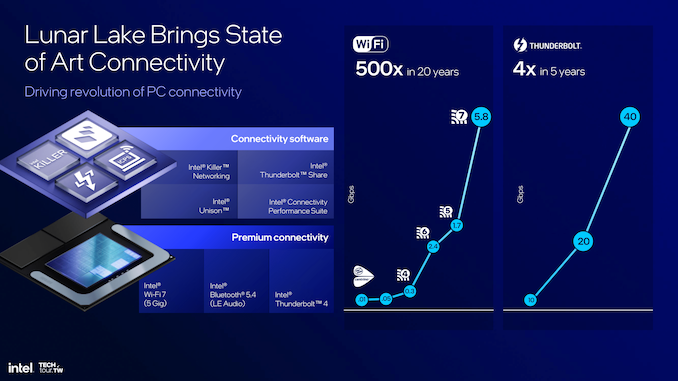
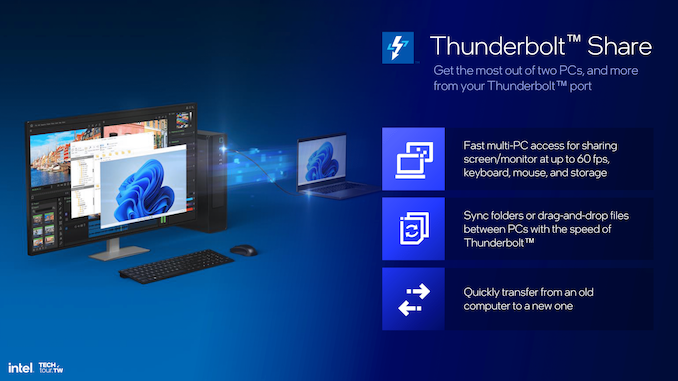
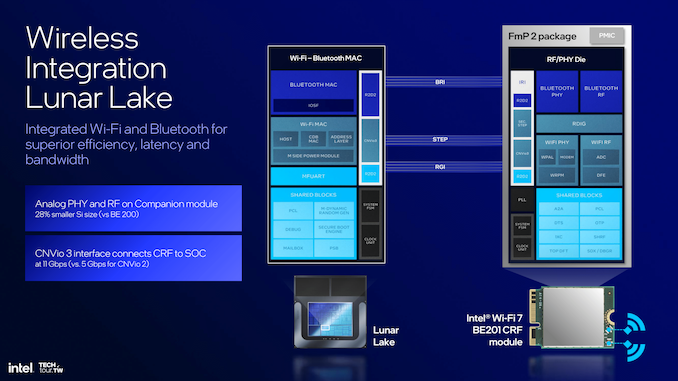
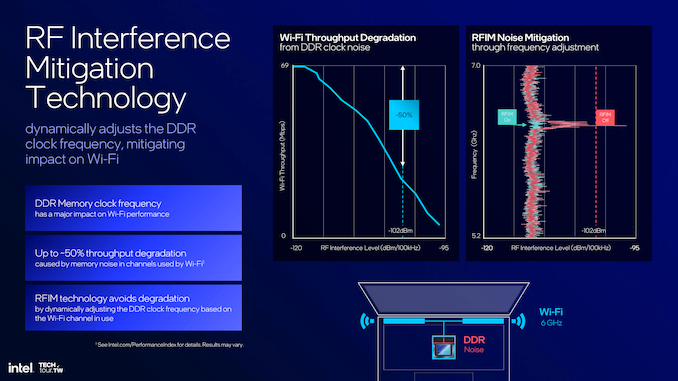
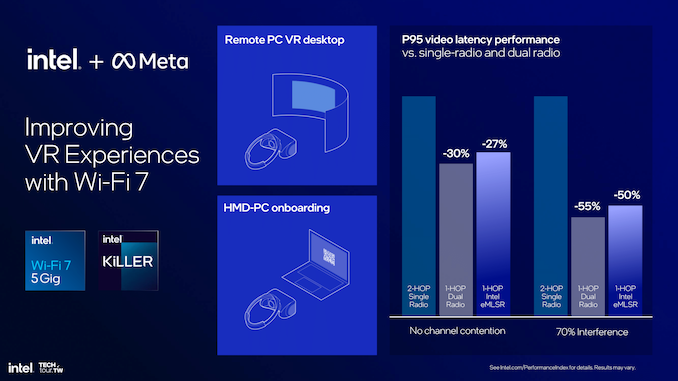








91 Comments
View All Comments
zamroni - Sunday, June 30, 2024 - link
so lunar lake soc die proves that Intel fake 4 is worse than tsmc n6and if the soc / platform controller is included in the compute die, it won't need tsv.
the lunar lake will be much simpler, perform better and might be cheaper Reply